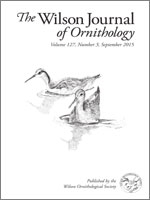The Sooty Swift (Cypseloides fumigatus) is one of five species in this genus that occur in Brazil. There is little information regarding its breeding biology and in the Brazilian state of São Paulo, the species is described as data deficient. This study describes the breeding biology of the Sooty Swift at Intervales State Park in São Paulo, southern Brazil from 2012 to 2014. Nests were monitored weekly at two waterfalls during the reproductive season. Nest construction started in mid-October. Egg laying started in late October with a clutch size of one egg. The incubation period was 27–29 days, and the average nestling phase was 56 days. Fourteen active nests were found, and six nestlings were monitored from hatching to fledging for plumage development, behavior, and provisioning. Adult activity was observed during nocturnal visits. A second egg was laid on four occasions: two after the loss of the first egg and two after a successful fledgling left the nest, but the latter two were not successful. The Sooty Swift shares similar nest site characteristics, phenology, and nestling behavior with other Cypseloides spp. Nocturnal visits to breeding sites reveal a very active environment and such visits should be encouraged to better understand the behavior of the Sooty Swift.
How to translate text using browser tools
1 September 2015
Breeding biology of the Sooty Swift (Cypseloides fumigatus) in São Paulo, Brazil
Renata Neves Biancalana
ACCESS THE FULL ARTICLE
Brazil
breeding
Cypseloides fumigatus
Sooty Swift
waterfalls





